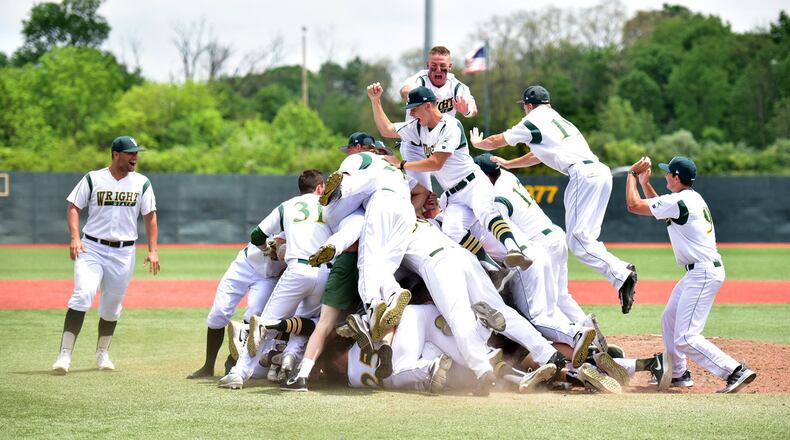“People felt there were a lot of challenges with that,” Sullivan said. “It’s more than basketball. It’s wrestling, ice hockey. Some conference tournaments were done. Some were in progress.”
» UD FEATURE: Local ER doctor talks about how job has changed
There was a much easier decision with spring sports. The NCAA announced Monday it would grant all spring-sport athletes — not just seniors — another year of eligibility because of the coronavirus pandemic, which resulted in the cancellation of the season, and that news was applauded by Sullivan and Wright State personnel.
“It’s absolutely the appropriate decision for spring sports,” Sullivan said, “and it’s simply the right thing to do.”
Plans for implementing the ruling, though, will take some time to figure out. The NCAA is giving teams a waiver to expand their rosters beyond current scholarship limits to make room for incoming freshmen, and each school will be allowed to decide how it wants to handle financial aid for returning seniors since that could put a strain on their budgets.
Wright State athletic director Bob Grant declined comment, and coaches weren’t made available to the media.
Nick Phillips, Wright State’s assistant AD in charge of communications, said some members of the athletic department talked immediately after the ruling, but they’re just in the beginning stages of figuring out what it means for the Raiders.
“We’ll continue to have conversations as a staff,” he said. “It probably will take a little time to get all those pieces worked out. But this is a good first step in opening up the doors and allowing us to make decisions and move forward.”
» ROSTER NEWS: Flyer enters transfer portal
A couple of Raider squads were off to strong starts. The baseball team, which won the 2019 Horizon League regular-season crown, has three wins over ranked opponents, while the golf team, which is coming off its first league title in 15 years and was the unanimous preseason favorite, finished first and second in the two tournaments it played before the shutdown.
Wright State released a statement by the athletic department, saying: “We are appreciative of the NCAA Division I Council’s swift actions in allowing for an additional season for our spring sport student-athletes and for permitting schools to make their own determinations on how to best proceed. There are still details to be ironed out, and we will work closely with both our coaches and student-athletes as we move forward in this process.”
NCAA president Mark Emmert told ESPN.com he believes giving each school flexibility on scholarships is the right decision in these uncertain times.
» WRIGHT STATE: Nagy sees Raiders thriving next season
“The next 12 months are going to be extremely hard on a lot of colleges and universities, especially small colleges that aren’t going to have tuition revenue,” he said. “They’re going to have high costs because they sent their students away, but they still have all of their costs. They’re not going to have any revenue from their endowments because of the crash of the stock market. The revenue from the tournaments isn’t going to be there, and the revenue from us is unlikely to be as big as it has been in the past.
“So then to turn around and say, ‘By the way, we’re going to increase the cost of your student athletics program,’ that’s a challenge. For the big schools that are the high-revenue institutions, that’s a whole different deal. You have to remember that college sports is, of course, something 1,100 different schools do, and the business models for all of them are very different.”

